The Excess Value Concept
Part-Whole Concept , the Comparison Concept and the Change Concept . A classic example of a question involving the Excess Value Concept is the "Chicken & Rabbit Legs" question. In these types of questions, both variables have a set of common values attached to them while one of the variables has an extra set of values attached to it. The idea is to isolate this extra set of excess value so that it could be subtracted from the total value of the two variables, thereby allowing us to divide the remaining unknown units equally to solve for its value.
To illustrate this concept, consider the following problem.
A farmer has 36 animals on his farm. They are either chickens or rabbits. Altogether, the chickens and rabbits have 100 legs. How many chickens are there?
Answer:
Step 1: First, let's assume all the animals on the farm are chickens. Each animal would have 2 legs. Draw a box to represent 1 animal with 2 legs.
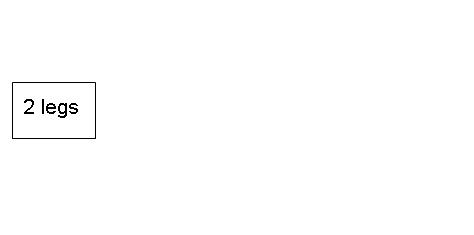
Step 2: Draw an arrow to the right to show that this box is repeated 36 times (label "36" at the end of the arrow).
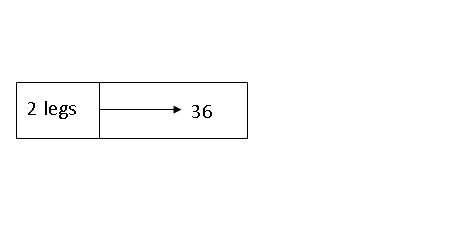
Step 3: Since all the animals have only 2 legs.
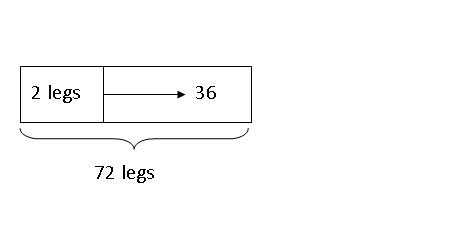
36 animals X 2 legs = 72 legs
Thus, they have a total of 72 legs (if they are all chickens).
Step 4: Since there are 100 legs in reality, the extra legs must belong to the rabbits(rabbits have 4 legs instead of 2). So, let's draw another long box to the right to represent the extra legs.
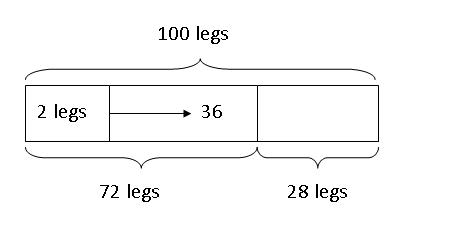
100 legs - 72 legs = 28 legs
Hence, there are 28 "extra legs".
Step 5: Since the legs belong to the rabbits, each rabbit should get 2 extra legs each.
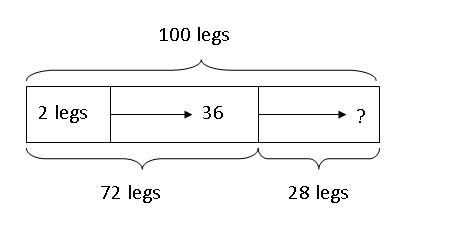
28 extra legs / 2 legs per rabbit = 14 rabbits
36 animals - 14 rabbits = 22 chickens
Therefore, there are 22 chickens.
If you want us to send you our future Modelmatics eZine that would inform you on the latest article in Teach Kids Math By Model Method, do an easy sign-up below. Subscription is FREE!




